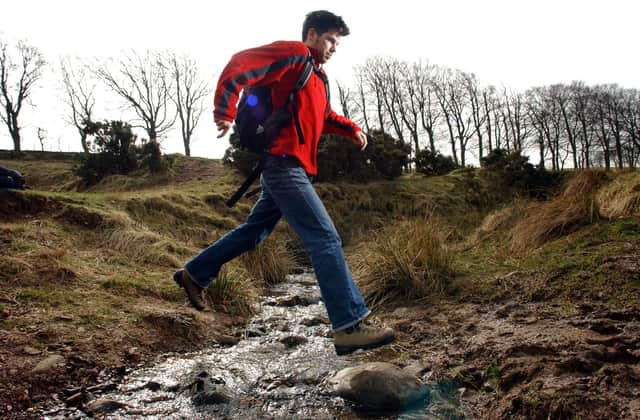The ‘right to roam’ is not as simple as it looks - Colin Bathgate


At the same time, the one piece of local daily exercise recommended by the Scottish Government became in many cases the highlight of the day. Often, this exercise took
advantage of the rights enshrined by the Land Reform Scotland Act 2003, which gives us a right of responsible access to all of Scotland’s land.
Advertisement
Hide AdAdvertisement
Hide AdWith Covid restrictions still in place, notwithstanding the dramatic rise of staycations, people are acquainting themselves with Scotland’s land like never before. Against this backdrop, it is worth recapping on the Right of Responsible Access, how this relates to privacy of the home and what responsible access means for access takers.


Right to roam
There is a common misconception that the 2003 Act enshrined a ‘right to roam’ in Scotland. This is not quite correct. The 2003 Act confers a Right of Responsible Access. This access allows people to be on, or to cross land in Scotland for recreational purposes, educational activities or for a commercial activity that could be carried out as a recreational activity.
The access is not just pedestrian, but includes bikes, horseback, non-powered boats on inland lakes and any other non-motorised forms of transport. This must be exercised responsibly and within the Scottish Outdoor Access Code.
There are a number of areas excluded. These include a sports field, a field where crops have been sown or are growing and an area of land where a building, or other structure has been constructed.
For access takers, Scotland has one of the most liberal regimes in the world. Unlike our southern neighbours, access takers in Scotland are not constrained to designated areas or paths. However this does not mean access takers have a carte blanche right to all land.
It is important to consider the privacy of dwellings when taking access. While this will be tricky on occasion, as public rights of way occasionally pass close to residential dwellings, a general rule is to stay off land which is maintained differently to the rest of the holding.
For example, ground close to a dwelling that appears to be kept for decorative and not agricultural, forestry, sporting or other industrial activities, will tend to be treated as private garden ground.
The home and the right to privacy
While the Act enables the public to access private land, the home itself is excluded from this. Access is not exercisable over land where there is a building, or on land adjacent to a dwelling which allows the owners to have privacy and enjoyment of their home. And it is not merely traditional dwellings that are afforded the right to privacy. Caravans and tents are also excluded areas. Furthermore there has been some confusion regarding the extent to which a garden can be excluded from public access, which has resulted in a number of high-profile cases.
Advertisement
Hide AdAdvertisement
Hide AdThere is no ‘one size fits all’ approach to privacy. It appears however, that the courts have been erring on the side of caution when determining what amounts to sufficient land for privacy. The court will look at the property itself and why a purchaser would be attracted to this type of property.
The result has been that the category of property will be considered, along with what constitutes a reasonable amount of ground for a property of that type.
The important point is that while the 2003 Act advances a very liberal access regime, privacy is at the forefront of the legislation and the courts have been upholding the interests of landowners. Even after the 2003 Act, in Scotland a person’s home remains their castle and is protected by law.
So whether you’re a landowner or a roamer, there are extensive rights for both parties enjoyed under the 2003 Act. These should be exercised responsibly and within the spirit of the Act.
Colin Bathgate is a Trainee Solicitor in the Land & Rural Business team, Gillespie Macandrew